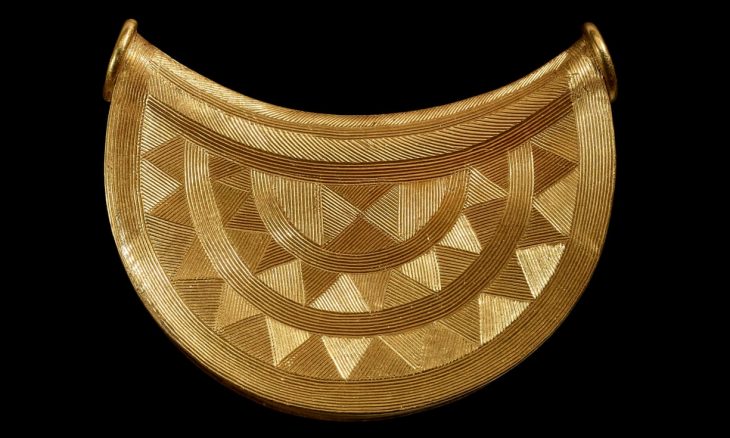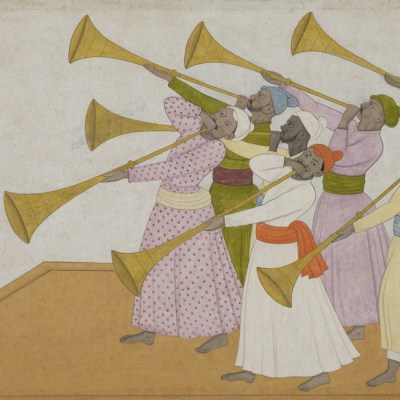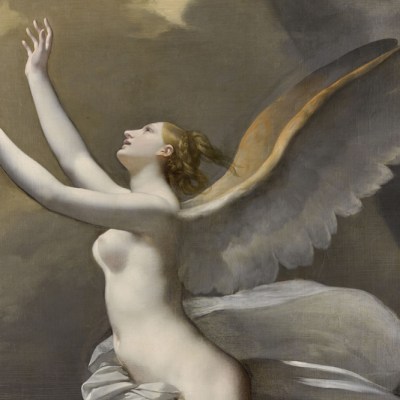A round-up of the best works of art to enter public collections recently
Art Fund
Prospect Cottage, Derek Jarman
The artist and film-maker Derek Jarman acquired Prospect Cottage, a former fisherman’s home on the Kent coast, in 1986, and lived there until his death in 1994. Adorned with poems, sculptures, and the rock-and-driftwood garden Jarman created upon the vast expanse of shingle at Dungeness, the house has long been acknowledged as an artwork in his own right. It was saved for the nation, after a high-profile crowdfunding campaign, organised by the Art Fund and supported by cultural figures and friends of Jarman including Tilda Swinton and the costume designer Sandy Powell, successfully raised £3.5m for its purchase and the establishment of a long-term endowment for its upkeep. For more on Jarman, read Richard Martin’s feature for Apollo here.
Derek Jarman’s cottage at Dungeness, Kent. Photo: courtesy Art Fund

British Museum, London
Bulla (c. 1000–800 BC)
This 3,000-year-old gold pendant, or bulla, was found in Shropshire by a detectorist in 2018. Decorated with geometric motifs, including what on one side appears to be a stylised solar design, it has been described by Neil Wilkin, the Bronze Age curator at the British Museum, as ‘the most important object from this period, the first age of metal, that has come up in about 100 years’. It will be shown at the Shrewsbury Museum and Art Gallery from November, before being moved to the British Museum – which has acquired it for £250,000 – for display in 2021.
Bulla (c. 1000–800 BC). Photo: British Museum

Cleveland Museum of Art
More than 100 works from the Keithley collection
Valued at some $100m, this transformative gift from collectors Joseph and Nancy Keithley is the largest single donation to the museum since 1958. The collection of more than 100 works (97 gifts and 17 promised gifts) ranges from modern European painting to Asian ceramics; it is particularly strong in work by the Nabis group, with a combined 15 paintings by Bonnard, Vuillard, Maurice Denis and Félix Vallotton. There are also works by major post-war American painters including Milton Avery and Joan Mitchell.
Gouise (1966), Joan Mitchell. Cleveland Museum of Art

Nationalmuseum, Stockholm
Henriette Charlotta Catharina Ronjon (1817–1891), Wife of the Photographer (c. 1840s), Johan Wilhelm Bergström
Johan Wilhelm Bergström came to prominence as a pioneering glass manufacturer in Stockholm in the 1830s, but over the course of the following decade, portrait photography – which had begun as a private hobby – became his consuming passion. Many of his daguerrotypes from the 1840s depict his wife, Henriette Charlotte Catharina; with its sharp definition and meticulous composition, this image of Henriette at her spinning wheel, newly acquired by the Nationalmuseum in Stockholm, is one of his finest.
Henriette Charlotta Catharina Ronjon (1817–1891), Wife of the Photographer (c. 1840s), Johan Wilhelm Bergström. Nationalmuseum, Stockholm

Victoria and Albert Museum, London
Cluster brooch (c. 1400–50), France or Germany
Discovered in 2017 by a detectorist in a patch of Northamptonshire farmland – formerly the royal hunting grounds known as ‘Great Park’ – this late medieval cluster brooch is made of gold moulded in the form of a flower. It was originally mounted with diamonds, cabochon and pearls, but some of the gems have been lost, while the pin is severely dented – suggesting that the brooch was ripped from its wearer during a hunt. Dating from the first half of the 15th century, and made in France or Germany, it is one of only seven of its kind in the world, and has been acquired by the V&A through the Treasure Act.
Late medieval cluster brooch (c. 1400–50), France or Germany Victoria & Albert Museum, London

This article was corrected on 8 April. A previous version stated that a painting by Jan Davidsz. De Heem had been acquired by the Museum of Fine Arts, Boston; the painting was recently privately acquired and is on loan to the museum.


